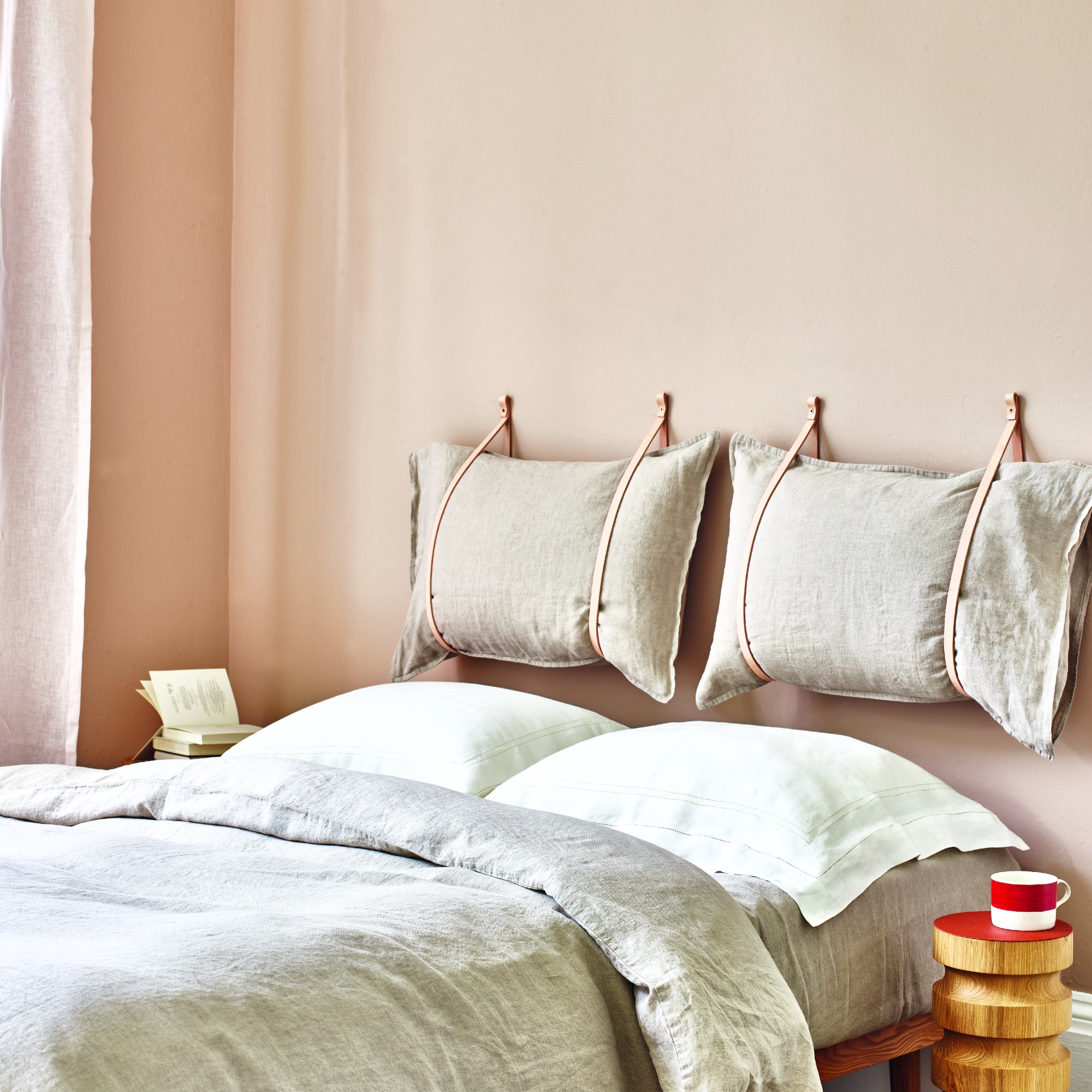
If your is covered in yellow staining, or flattened to the point that it closely resembles a pancake it is time to buy a new one. But what to do with the old one? Can you recycle pillows?
Given how much of our lives we spend in bed or sleeping, it’s important to pay attention to the components in our sleep sanctuary and this means parting with pillows that no longer offer the right amount of support or comfort.
Can you recycle pillows?
Unfortunately, because of the types of materials that are used in the best pillows – including memory foam and other synthetic fibres – you can’t recycle an old pillow in a traditional recycling bin. This is because it is difficult to recycle them using conventional methods. But that doesn’t mean that they have to go in your general waste bin either.
Here are some of the best ways to dispose of old pillows to give them a second, or even multiple lives, after they’ve served their original purpose…
How to dispose of old pillows
According to Fabric Online's textiles expert, Thomas Bird, ‘your local council likely has specific instructions on how to dispose of bulky items like pillows. Some may offer collections or have designated drop-off points.’ So, it’s definitely worthwhile double-checking this.
'If your council doesn't have a specific collection, you can often dispose of pillows in your general household waste. However, you’ll want to be mindful of local regulations and restrictions,’ Thomas adds.

Several brands and retailers also offer textile take-back schemes. Dunelm have their Textile Take Back Scheme which is part of a larger project that has been set up to tackle textile waste across the country. While there are several participating stores, where you can drop off your old pillows, they now offer it as an online service. It is as easy as wrapping your pillow or pillows up in a bag and either printing out a label from the Dunelm website or generating a QR code to allow you to drop it off at your nearest drop-off point. The service is completely free and it saves you from having to worry about how to recycle or reuse your pillows.
Where can I donate duvets and pillows in the UK?
Thankfully there are a number of places where you can donate pillows – and duvets – here in the UK. Certain charities, homeless shelters and animal shelters may be able to put them to good use.
For example, ‘many local animal shelters use pillows as bedding for their furry friends as they're the ideal size as a cosy bed for small cats and dogs,’ Mark Tremlett, founder of Naturalmat, says.
And even though certain ‘charities won’t accept pillows for resale, they might pass them on to partner organisations or shelters,’ Laura Keay, sustainability director at The Fine Bedding Company, adds.
Do check the websites first before trying to drop off any bedding as not all animal shelters accept pillows.

Are there any ways to reuse old pillows?
Thankfully there are a number of creative ways to reuse and repurpose old pillows. So, whether you’re particularly crafty or not, here are just a few of the experts’ favourite ways to give your old pillows a second life.
As it starts to get that bit colder, you can use the stuffing from an old pillow or pillows to add some insulation to your loft, allowing you to ‘upcycle and save energy usage,’ according to Laura. You could even use the stuffing as ‘insulation for the loft or as insulation for animal hutches, to keep your rabbit and other smaller animals warmer over winter.’
It’s also another one of our favourite DIY draught proofing ideas, as you can use a pillow’s innards to make your very own draught excluder to prevent cold air from seeping in under your doors or through gaps around your windows or fireplace.
If you enjoy a spot of crafting or DIY, why not try using the filling from old pillows to make some stuffed animals or new cushions?
One of Laura's suggestions is to use 'the filling from old pillows can also be used to create comfy beds for your pets, or if your sofa cushions are looking a little wilted and flat - use the inside of your pillows to refresh and plump them up.’

In addition to this, ‘old pillows can be used as padding to protect fragile items when moving house or storing items,’ Polya suggests. Or why not ‘repurpose old pillows as cushions for outdoor seating, where they can add comfort to garden furniture. You can even fold and sew old pillows to create knee pads for gardening or other tasks that require kneeling.’
And did you know that you could even reuse old pillows in the garden as compost, depending on its material? ‘As duck feathers and goose down are a natural product and an excellent source of nitrogen, they can also be used in your compost to help your garden soil flourish,’ Mark reveals. Plus, ‘you can also pull out the wool pad from your pillow, break it up and pop it into your compost bin, use it to line the bottom of your plant pots or place it in your garden as mulch.’
How often should I replace my pillows?
‘As a general rule, you should replace your pillow every 1-2 years, although this can vary depending on a few key factors. This includes the materials of the pillow, whether you are sensitive to allergies or asthma, and whether the pillow has a protector,’ says James Sheldon, furniture specialist and manager at Online Sofa Shop.
‘Unlike duvets, pillows tend to wear out faster due to the pressure from our heads, which gradually flattens them and reduces support. However, natural pillows made from silk or wool often maintain their shape and support longer than synthetic ones,’ James continues.
Polya Petrova, a cleaning professional at Fantastic Services, agrees that, ‘memory foam pillows usually have a lifespan of around 2-3 years, while synthetic pillows and feather down are around 1-2 years.’
What are the signs that your pillow should be replaced?
There are a number of visible signs that your existing pillow might need replacing. One of the easiest ways to determine this is by holding out your arm and putting your pillow over it. If it folds in half or doesn’t bounce back to its original shape, it’s time to bid it farewell. The same can be said for ones which have become lumpy.
And if you’re waking up with a sore neck or any kind of discomfort, your pillow might not be providing you with adequate support anymore. At the same time, ‘an increase in allergy symptoms, such as sneezing or itchy eyes, could be due to dust mites, mould, or bacteria accumulating in your pillow,’ Polya warns. While ‘visible stains, odours, or a generally unpleasant smell are signs that your pillow has absorbed too much moisture, sweat, or oils over time and should be replaced.’
Have the time come for you to recycle your old pillow?







